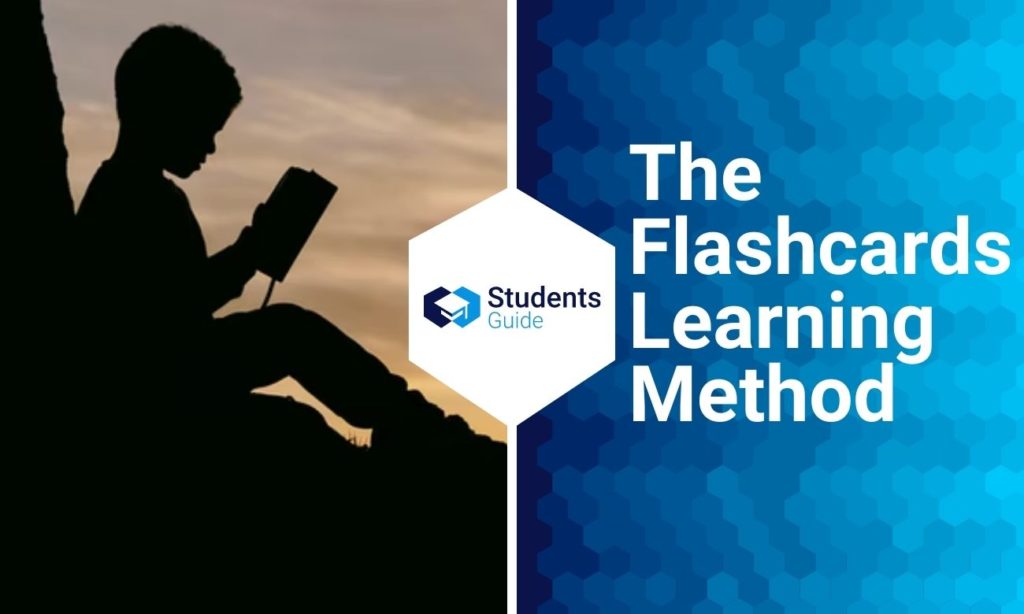Flashcards are a great tool for any student that needs to memorize new information. Instead of forcing all the information in your head all at once, breaking up the material in small note card sized bits can prove more effective both for memorizing and retaining information. While it might not be enough for complex and articulate subjects, cards are especially helpful to learn new vocabulary or to memorize single facts and dates. This is also a very effective way to test your knowledge, since you’ll need to review the cards repeatedly.

The Leitner System
One of the most popular and effective ways to use flashcards is the Leitner System, invented by the science journalist Sebastian Leitner in the ‘70. Getting started with this method is rather easy; for each concept you come across, prepare one flashcard, writing a brief explanation on the backside. Once you are done, prepare three different boxes, in which you will put the cards as you review them.
These boxes indicate how often you should go over one specific piece of information:
- Box 1, to review every day.
- Box 2, to review every other day.
- Box 3, to review once a week.
As you start going through your flashcards for the first time, put all the ones you remember in box 2 and those you didn’t memorize in box 1. In each session you will review the cards according to the boxes, moving all those you remember one box forward. You need to be fully honest with yourself, making sure that you actually absorbed that piece of information. If something about a concept eludes you, move the flashcard in the previous box. This way, all the information will be automatically divided according to what you find harder (or easier) to memorize and your study sessions will become much more efficient. Remember to shuffle the cards in each box before starting to go through them, to make sure you don’t just remember them in a specific order. You can adapt this method to shorter periods of time by just using two boxes: one for the information you know and one for what you don’t know. This is usually a good way to review the material not long before a test.
If a flashcard continues to elude you, try reading the section in your textbook or notes one more time and repeating it out loud, before going back to the boxes.
Why do flashcards work so well
The Leitner System will be much more effective than passive reading. The first benefit is that you will be actively answering questions, fully engaging your brain to retrieve information and, as a result, memorizing each piece of information much more effectively.
Also, the spaced repetition allows us to automatically go back to what we already learned, making sure we don’t just forget important information. Breaking up concepts guarantees that we don’t get overwhelmed by large amounts of material, getting us ready for any test without exhausting all of our energy.
Furthermore, flashcards can help in time management and ensure that we go over everything without leaving anything behind.
How to optimize your flashcards
The flashcard learning method is generally pretty functional by itself, however, there are some ways to make it more effective and customized to your needs.
First of all, it’s better to make your own flashcards, choosing the size and layout that fits you best. There are many apps that allow you to follow this method and most of them are quite effective, but nothing really beats writing and personalizing them by hand.
Another way to make your flashcards more effective is to mix written text and images. Most people find it easier to remember images as opposed to text, however, this doesn’t mean that you should just draw on your flashcards: the best way is to just include a small image next to the text, this will definitely help jog your memory. You don’t need to be an artist, any simple drawing that makes sense to you will do. Combine this approach with color coding to make it even better. Make sure to break all complex information into small bite-sized pieces, writing a simplified explanation on the card. Be careful though, if you oversimplify the concept you might end up cutting out important parts, completely defeating the purpose of this method.
One additional trick to retain information is to combine the Leitner System with the Pomodoro Technique. This time management system will ensure that you take regular breaks, avoiding getting overly tired.
How does it work?
Just set a timer to 20-25 minutes and start studying, when it rings, take a short break, generally 5-10 minutes, and start again. Each fourth break, take a little more time (15-20 minutes). Repeat this session how many times you need.
The flashcards learning method: conclusions
Managing your student life can prove difficult and exhausting. Luckily, with the help of specifically designed methods and useful apps, you can both save yourself a lot of unnecessary stress and wasted time. A completely new studying method can seem like a daunting task to some of us, however, I encourage you to try out the Leitner System. Less stress and better grades are basically guaranteed. Incorporating flashcards in your routine can make your student life much easier.
